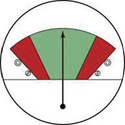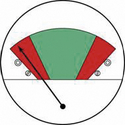Keep exposure safe – and legal
5 February 2011HM Inspector for Health and Safety Cliff Seymour spells out what companies need to know and do about dust extraction
Summary
¦ COSHH requires that employers control risks to their employees’ health.
¦ The Workplace Exposure Limit for hardwood and softwood dust is 5mg/m³.
¦ Local exhaust ventilation is the best way to control wood dust.
¦ Respiratory protective equipment can complement, but not replace, extraction.
The risks of incident or injury in working with wood are generally well known – yet the health risks associated with the inhalation of dust from softwood and hardwood continue to be underestimated.
These dusts are what are known as “respiratory sensitisers”, and can cause occupational asthma and other respiratory problems. Hardwood dust can also cause nasal cancer.
Wood processors do have legal obligations. The law, or more specifically the Control of Substances Hazardous to Health Regulations 2002 (COSHH), requires that employers control risks to their employees’ health arising from work activities.
This means that:
? where exposure to hazardous substances (including airborne dusts) cannot be prevented, then it must be adequately controlled;
? and, so far as is reasonable and practicable, exposure shall be adequately controlled by means other than personal protective equipment (PPE).
Both hardwood and softwood dusts have a Workplace Exposure Limit (WEL) of 5mg/m³ which must not be exceeded. This limit is applied to the amount of dust in the air, averaged over an eight-hour working day. Employers are required to ensure that exposures are kept as far below these limits as is reasonably practicable.
Controlling the risk at source
The best way for employers to control exposures to wood dust is to have an effective extraction system, often termed local exhaust ventilation (LEV). This should be capable of capturing and removing the dust at source before it can spread. However, to be effective the extraction must be properly designed, maintained and used correctly.
The design of an extraction system should take into account the number and type of machines and the layout of the workshop or factory. Employers commissioning an extraction system should ensure that the designer is supplied with this information.
To ensure effective dust capture, the correct air velocity at each machine connection should always be used. The designer can obtain these values from either the machine manufacturer or from an experienced professional body.
When the extraction system is first installed it must be commissioned to prove that control has been achieved. Fitting airflow indicators will help to show that control continues to be effective. A correctly calibrated airflow indicator is the only method that will show you immediately if there is a problem such as incorrect flow adjustment, blockage or damage to ducting.
Employers should follow the extraction manufacturer’s instructions for maintenance and should record any actions taken. Ensuring that a competent person examines the extraction at least every 14 months is also a legal requirement.
Other controls
Workers should be educated on the risks associated with wood dust, and trained on how to use extraction and other control measures properly, including, for example, appropriate cleaning processes or the use of respiratory protective equipment (RPE).
Wood dust should be cleaned up with vacuum cleaners with high performance filters (HEPA), or by using a hose connected to the extraction system. Airlines and brushes should not be used as these cause high levels of exposure.
RPE may also be needed but should not be relied on as the only means of control. It should complement other control measures such as extraction.
Where RPE is required it is important to:
? select the right type of mask;
? ensure it fits properly by having it ‘face fitted’, and by being clean-shaven;
? look after it / change it regularly in accordance with the manufacturer’s instructions.
There are a number of types of RPE – FFP3 (20x protection) is the most appropriate if you are exposed to high levels of wood dust.
Health surveillance
Because wood dusts can cause asthma, employers should have health surveillance in place to ensure early detection of adverse health effects on employees.
For most kinds of wood, a low-level health surveillance questionnaire is adequate. This should be completed when someone first starts work, with a follow-up after six weeks, and then repeated once every year. These questionnaires tell you what to do if you think someone has been affected.
A higher level of health surveillance, including lung function testing, is needed for exposures to high-risk woods such as western red cedar, a known asthmagen.
? Information on wood dust, extraction and health surveillance, including links to sample questionnaires, can be found on HSE’s woodworking website www.hse.gov.uk/woodworking.
Further information on extraction and airflow indicators can be found on the HSE’s LEV website www.hse.gov.uk/lev/index.htm.
Further information on the Control of Substances Hazardous to Health Regulations 2002 (COSHH) can be found on HSE’s COSHH website www.hse.gov.uk/coshh/index.htm.


